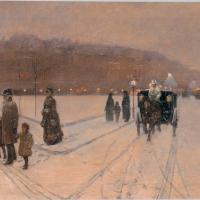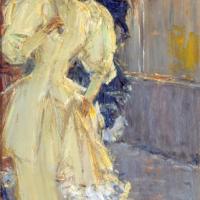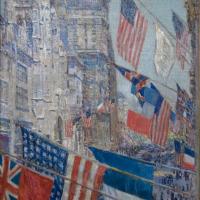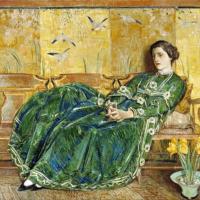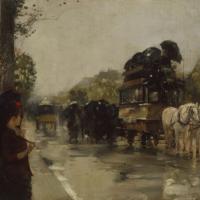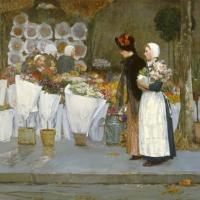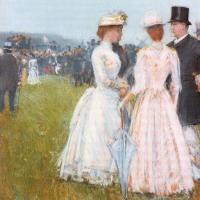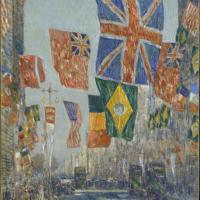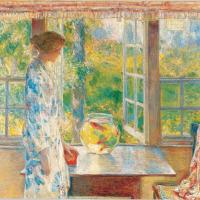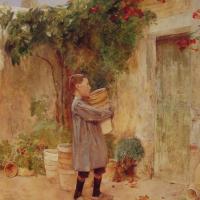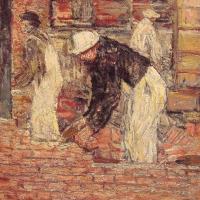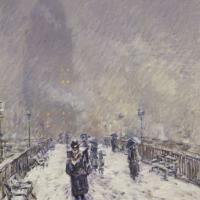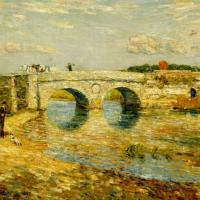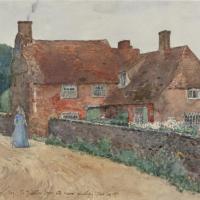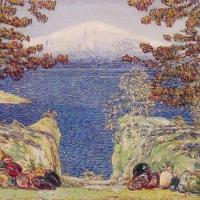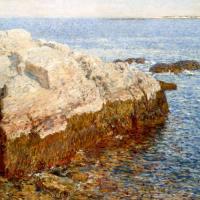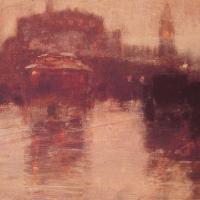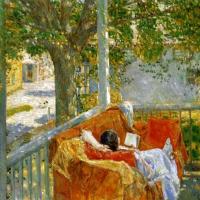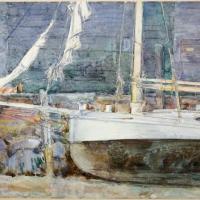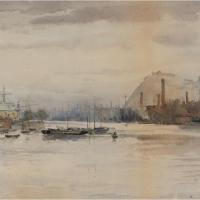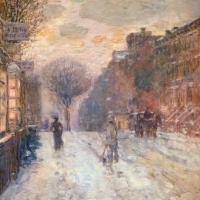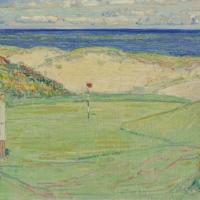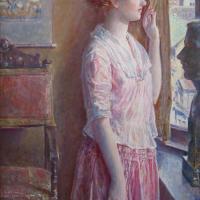Childe Hassam
A City Fairyland
$450.00
A Rainy Day, New York
$450.00
Afternoon, Devon Yacht Club
$450.00
Allies Day
$450.00
April (The Green Gown)
$450.00
At The Florist
$450.00
At The Grand Prix In Paris
$450.00
Avenue Of The Allies
$450.00
Bowl Of Goldfish
$450.00
Boy With Flower Pots
$450.00
Bricklayers
$450.00
Bridge Over The Stour
$450.00
Broadstairs Cottage
$450.00
California
$450.00
Cliff Rock-Appledore
$450.00
Columbus Avenue
$450.00
Couch On The Porch, Cos Cob
$450.00
Drydock, Gloucester
$450.00
Dumbarton Rock
$450.00
Childe Hassam
Childer Hassam (1859-1935)
Frederick Childe Hassam (October 17, 1859 – August 27, 1935) was an American Impressionist painter, noted for his urban and coastal scenes. Along with Mary Cassatt and John Henry Twachtman, Hassam was instrumental in promulgating Impressionismto American collectors, dealers, and museums. He produced over 3,000 paintings, oils, watercolors, etchings, and lithographs over the course of his career, and was an influential American artist of the early 20th century.
The most distinctive and famous works of Hassam's later life comprise the set of some thirty paintings known as the "Flag series". He began these in 1916 when he was inspired by a "Preparedness Parade" (for the US involvement in World War I), which was held on Fifth Avenue in New York (renamed the "Avenue of the Allies" during the Liberty Loan Drives of 1918). Thousands participated in these parades, which often lasted for over twelve hours.
Being an avid Francophile, of English ancestry, and strongly anti-Germany, Hassam enthusiastically backed the Allied cause and the protection of French culture. The Hassams joined with other artists in the war relief effort from nearly the beginning of the conflict in 1914, when most Americans as well as President Woodrow Wilson were decidedly isolationist. Hassam even considered volunteering to record the war in Europe, but the government would not approve the trip. He was even arrested (and quickly released) for innocently sketching naval maneuvers along the city's rivers. In addition to the time he gave to many committees, several of his flag pictures were contributed to the war relief in exchange for Liberty Bonds. Although he had great hopes that the entire series would sell as a war memorial set (for $100,000), the pictures were sold individually after several group exhibitions, the last at the Corcoran Gallery in 1922.
Claude Monet, among other French artists, had also painted flag-themed works, but Hassam's have a distinctly American character, showing the flags displayed on New York's most fashionable street with his own compositional style and artistic vision. In most paintings in the series, the flags dominate the foreground, while in others the flags are simply part of the festive panorama. In some, the American flags wave alone and in others, flags of the Allies flutter as well. In his most impressionistic painting in the series, The Avenue in the Rain (1917), which has been in the White House permanent collection since the Kennedy administration, the flags and their reflections are blurred so extremely as to appear to be viewed through a rain-smeared window. On entering the White House, Barack Obama chose to display it in the Oval Office. Hassam's flag paintings cover all seasons and various weather and light conditions. Hassam makes a patriotic statement without overt reference to parades, soldiers, or war, apart from one picture showing a flag exclaiming "Buy Liberty Bonds". Flag paintings by Hassam are in the collections of The Metropolitan Museum of Art, the New York Historical Society, the Virginia Museum of Fine Arts, the Princeton University Art Museum and the National Gallery of Art.
In 1919, Hassam purchased a home in East Hampton, New York. Many of his late paintings employed nearby subjects in that town and elsewhere on Long Island. The post-war art market boomed in the 1920s, and Hassam commanded escalating prices, though some critics thought he had become static and repetitive, as American art had begun to move on to the Realism of the Ashcan School and artists like Edward Hopper and Robert Henri. In 1920, he received the Gold Medal of Honor for lifetime achievement from the Pennsylvania Academy of the Fine Arts and numerous other awards through the 1920s. Hassam traveled relatively little in his last years, but did visit California, Arizona, Louisiana, Texas, and Mexico. He died in East Hampton in 1935, at age 75.
He denounced modern trends in art to the end of his life, and he termed "art boobys" all the painters, critics, collectors, and dealers who got on the bandwagon and promoted Cubism, Surrealism and other avant-garde movements. Until a revival of interest in American Impressionism in the 1960s, Hassam was considered among the "abandoned geniuses". As French Impressionist paintings reached stratospheric prices in the 1970s, Hassam and other American Impressionists gained renewed interest and were bid up as well.


